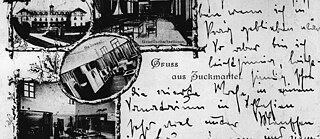Kafkaesque worlds Kafka in the Indian art and literature

The influences of Franz Kafka extend beyond literature and find resonance worldwide in visual arts, film and architecture. Indian artists such as Dilip Ranade, Anurag Kashyap, Rohit Raj Mehndiratta and Zafar Anjum take inspiration from Kafka.
Dilip Ranade, an artist originally from Mumbai, describes himself as a great admirer of Kafka. From 1971 to 2015 Ranade worked at the State Museum Shivaji Chhatrapati in Mumbai as an artist and curator. Working with animals (taxidermy and diorama) in the natural history department of the museum as a young man instilled in Ranade a lifelong fascination with animals. The worlds of both Kafka and Ranade are teeming with animals that play main character roles. Another factor that links Ranade with Kafka is the conviction that human existence is fundamentally absurd. The dead-end, hopeless existential situation in which Kafka’s characters often find themselves is also a recurring theme for Ranade.Art, Kafka and the absurdity of life
In the picture Kafka in the Aquarium, Kafka is portrayed standing in an aquarium in front of a huge fish that appears to be gasping for air. In this composition, Kafka is looking to the right with a very serious expression, while the fish is swimming in the other direction. A second fish, at least the lower part of it, can be seen in the top half of the picture. A third, black fish is only noticeable on careful inspection of the artwork, because it blends in with the figure’s dark suit. The unusual combination of fish and Kafka creates an uncanny overall picture, which is emphasised further by the blue colour of the fish and the blue reflection of Kafka’s face. Is it an image from a dream? Kafka’s works, for example Die Verwandlung (The Metamorphosis) and Der Process (The Trial) are also known to achieve a seamless fusion of dream and reality, which is a beautifully integrated aspect of this portrait as well.Another picture by Ranade is entitled Franz Kafka’s Fictional Logic. It shows Kafka in a powder-pink coat against an even paler pink background. There are large dark holes in his coat and in the background, through which an almost transparent ribbon runs, alternating between white and the pink colour of blood. An artificial connection between a person’s inner world and the outside world is suggested by the ribbon and the obvious holes. The question is whether the inner world is in harmony with the outside world. According to Ranade, Kafka’s absurd world follows its own logic.
The two portraits above, which were created in 2003, form a single unit. For these artworks Ranade uses the last known photograph of Kafka, which dates from 1923/24. The striped tie is identical too. The historical photo is surrounded by and overlaid with other objects, causing the emergence of new visual compositions that can be described as photo montages.
For Rohit Raj Mehndiratta, an avowed fan of Kafka and Sigmund Freud, the focus is on a fascination with the ‘unconscious’. With his ink drawing Metamorph, which is inspired by Kafka’s story Die Verwandlung (The Metamorphosis), the artist has erected a monument to the author. The arts supplement of the newspaper The Indian Express describes it like this: “The Metamorph is the artist’s take on Kafka’s novella Metamorphosis, a psycho-analytical tale of a salesman who transforms into a giant insect overnight.”
The black-and-white picture has three parts, which represent the story in three sections. Each of these sections describes a turbulent scene. In the first one, Gregor Samsa’s transformation is still in progress. Gregor is in a transitional state between human and animal. The densely-packed zigzags are a reference to the “anxious dreams”, or the psychological metamorphosis undergone by Samsa. In the second part the chaos has become a bug with numerous “pitifully thin legs”. The physical transformation is complete. An apple rots on his back. This “reminder” of his father’s cruel treatment is something he has to carry around everywhere. In the final part, he/it has “snuffed it”. The corpse, its head sunken, looks “flat and dry”. The zigzag lines are no longer visible.
When films capture the Kafkaesque madness
Anurag Kashyap’s Bollywood film No Smoking (2007), a loose adaptation of Stephen King’s short story Quitters (1978), is clearly inspired by Kafka’s narrative strategies. The 30-year-old protagonist in the film is called K., like Kafka’s character in Der Process (The Trial) or the film-maker Kashyap himself. In an interview Kashyap was asked: “…the ‘K’ in ‘No Smoking’, is it a reference to Kafka or Kashyap? His reply was: “Me. I don’t want to die before my work gets published.”In the film, K. is a chain-smoker who wants to give up smoking. To achieve this, he visits a rehab centre that’s similar to Kafka’s world. The film is a mixture of reality and dream worlds. The topography of the rented apartments, labyrinthine situations and the anxiety of the protagonists seem thoroughly Kafkaesque. No Smoking is considered a cult film today. Kashyap himself said that Kafka was one of his favourite authors. In 2016 his film Udta Punjab, which addresses the theme of drug addiction in the Indian Punjab region, was banned by the Central Board of Film Certification in India. The way in which his film had been subjected to “trial” reminded him of Kafka’s eponymous novel, said Kashyap. Luckily the ban on his film was lifted again thanks to a subsequent “judgment”.





